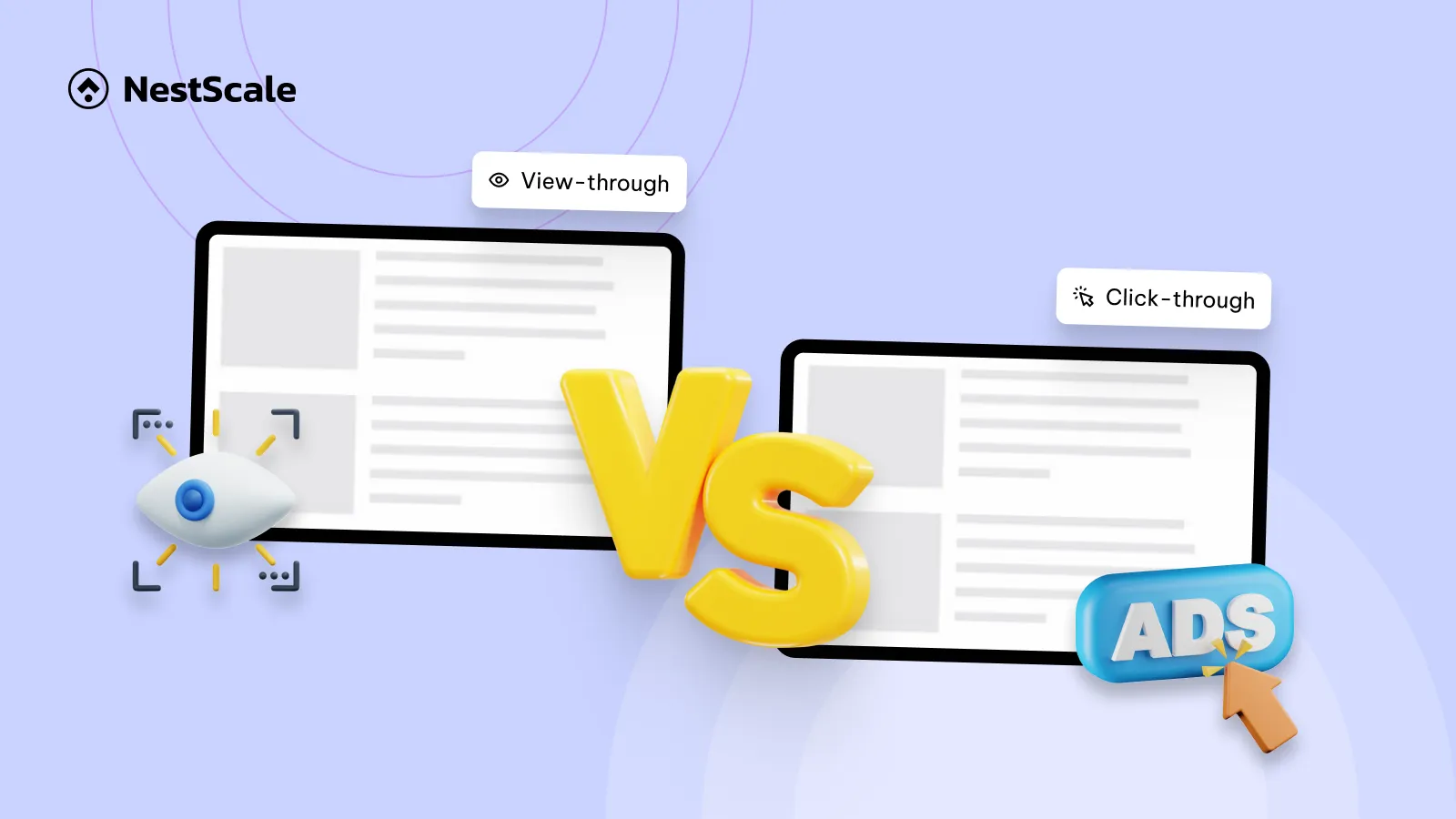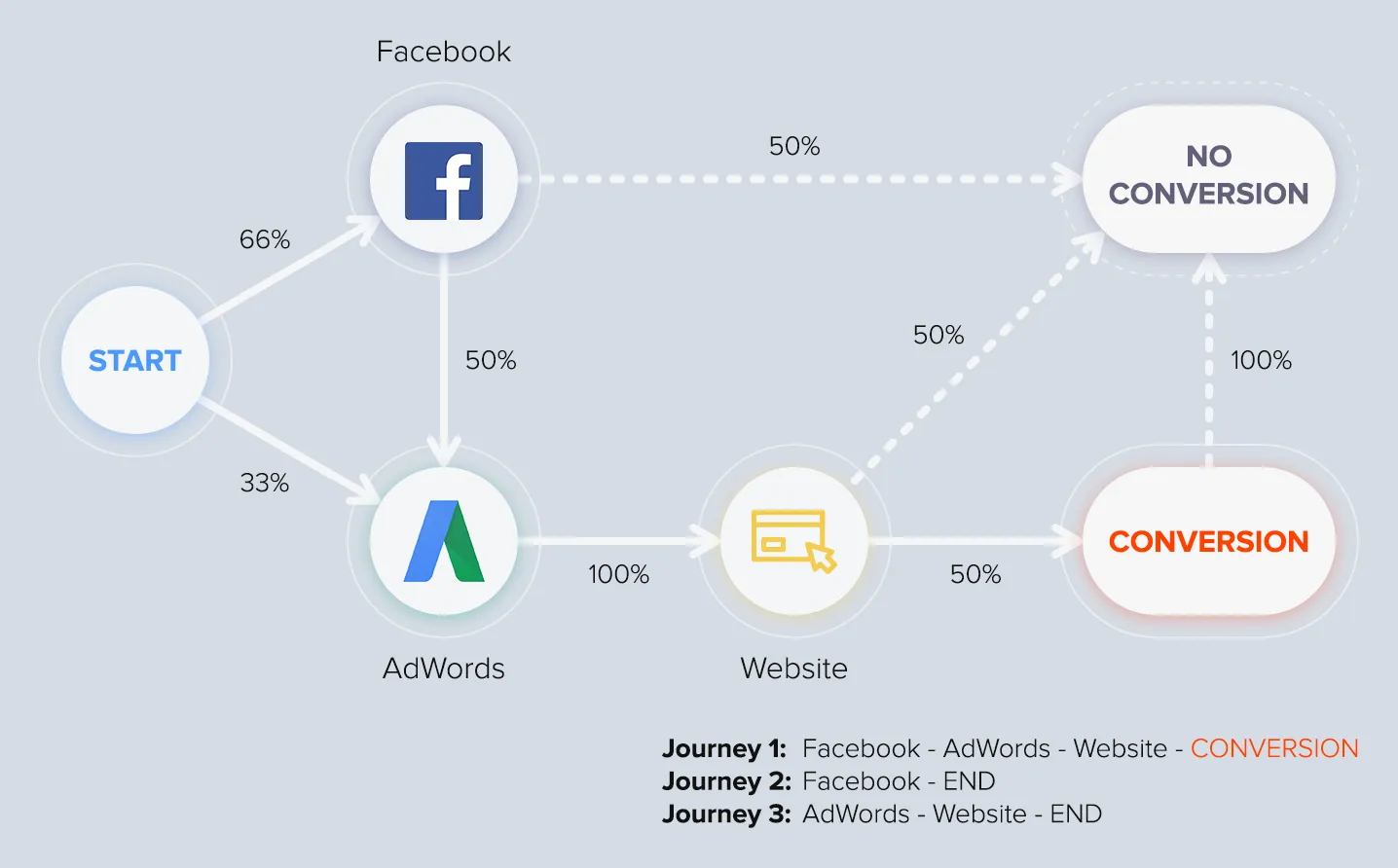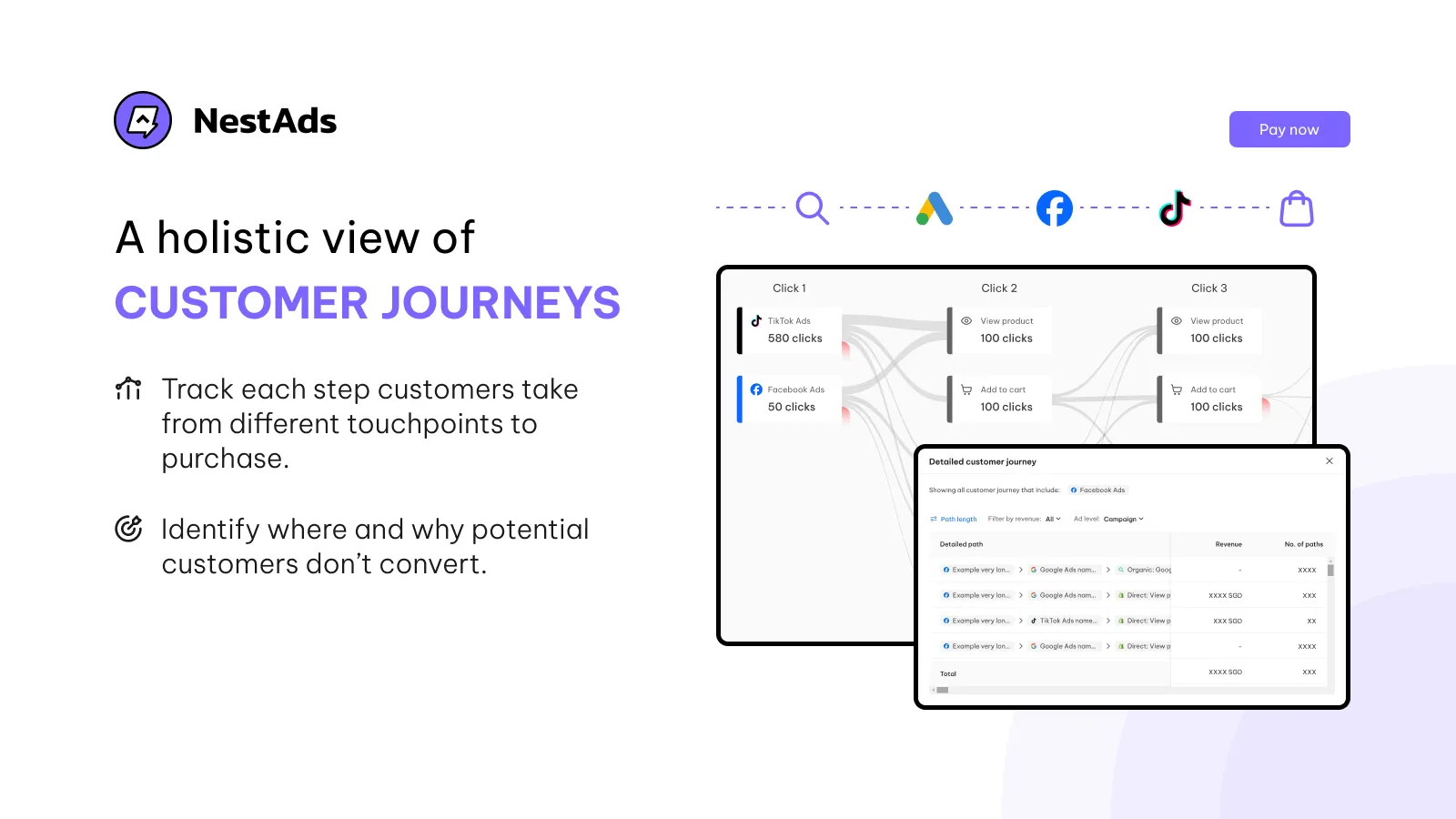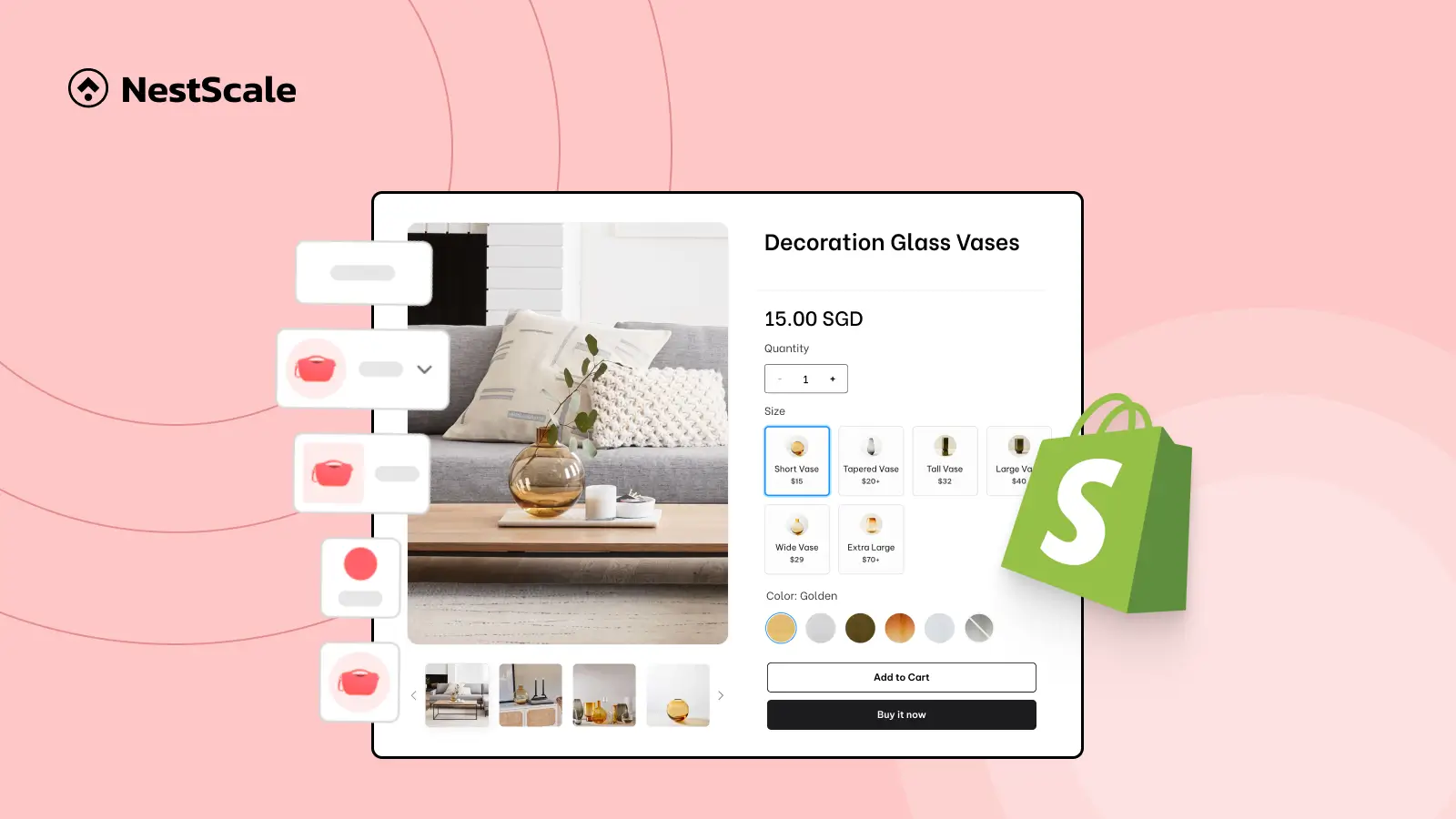Let’s say you’re running a holiday campaign for a new product. The display ads you’ve carefully designed barely get any clicks, leaving you questioning their effectiveness. But then, as sales increase, you uncover that customers saw those ads, didn’t click, yet still purchased after searching for your product later. Suddenly, you realize your display ads weren’t failing, they were planting seeds of interest that led to conversions through a different path.
This scenario opens up the core debate between view-through attribution vs click-through attribution. Especially when customer journeys are becoming more and more complex, it’s essential to understand how these attribution models play their roles in your campaign. Thereby, you can draw up a strategy that works best for your advertising campaign.
Here are some key points we’re going to discuss in this blog:
- What is view-through and click-through attribution?
- What is the difference between view attribution and click attribution?
- How can you apply both models to optimize your marketing strategy?
An overview of view-through attribution and click-through attribution
First, let’s clarify what view-through attribution vs click-through attribution is to be sure you understand them right.
What is view-through attribution?
View-through attribution (VTA), also known as impression tracking, is a conversion tracking model that attributes conversions (app installs, re-attribution, re-engagement) to ad impressions. This means that even if a user doesn’t click on an ad, but converts within a certain timeframe after seeing it, the conversion is still credited to the ad impression.
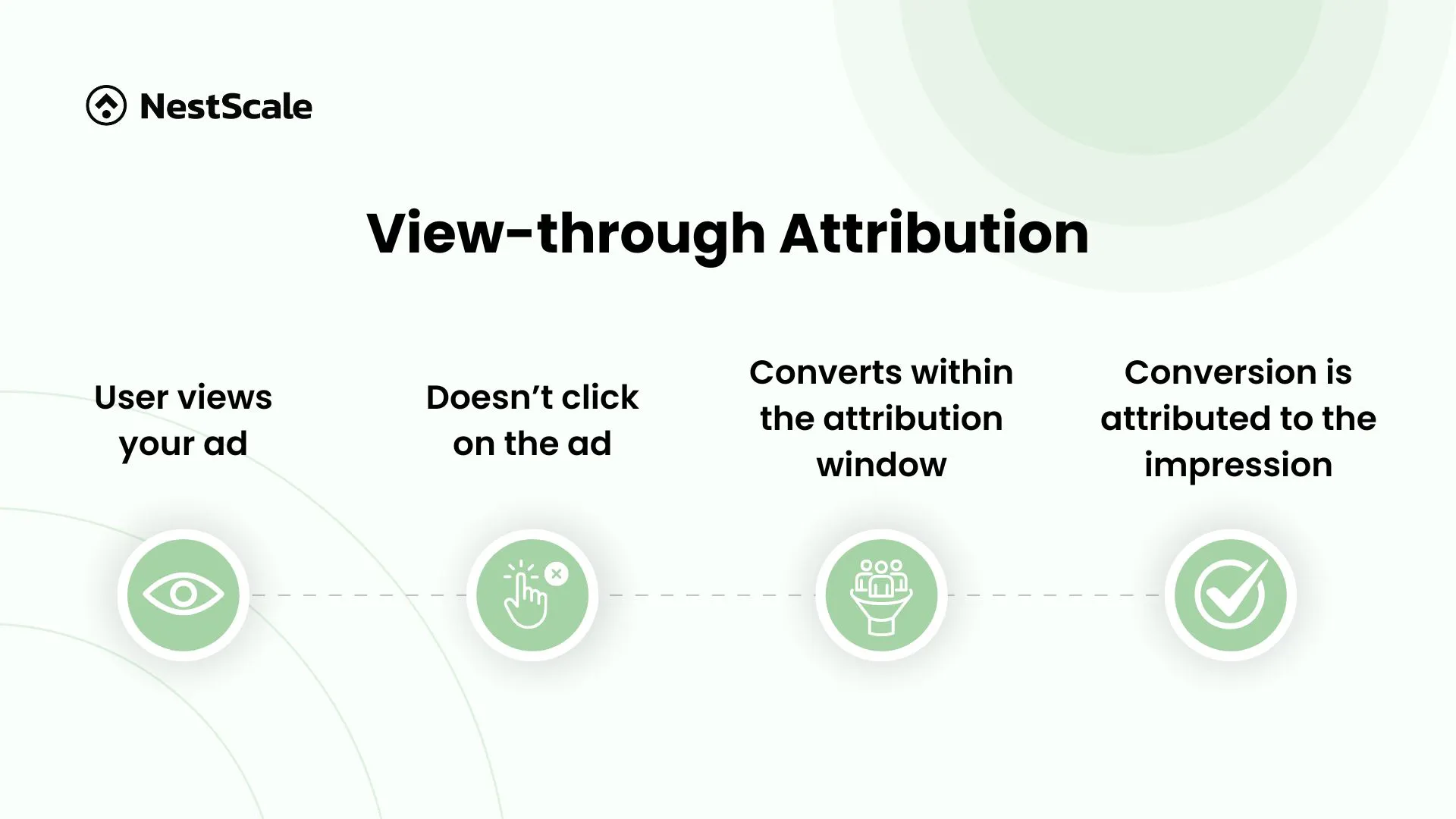
We’ll make it clearer with an example. Let’s say you run an online store that sells premium coffee makers. You launch a display ad campaign featuring high-quality images of your best-selling coffee maker. These ads appear on cooking blogs and lifestyle websites your customers frequently visit.
One of your potential customers, John, sees your ad while scrolling through a blog but doesn’t click. A few days later, John searches for “best coffee maker for home use” on Google, clicks on a search ad for your store, and buys the coffee maker.
Without view-through attribution, you’d probably think John’s purchase was solely because of the search ad. But view-through attribution shows that the display ad he saw earlier played a critical role in keeping your product top of mind, influencing his decision to purchase later.
FYI: Currently, popular ad platforms offer view-through attribution such as TikTok Ads, and Facebook Ads.
Hence, what can we take away from view-through attribution insights?
- The value of ads that create awareness. Display ads, for example, might not get clicks but can keep your brand on top of customers’ minds.
- Modern shopping journeys are rarely linear. A customer might see your ad, check reviews on another platform, and then return days later to make a purchase. View-through attribution connects these dots to help you see how different touchpoints work together to drive sales.
| Benefits | Limitations |
| – Measures the impact of ads that don’t get clicks but influence purchases. – Helps connect multiple touchpoints in complex customer paths. – Recognizes the value of awareness-focused ads in driving sales. | – May credit ads that had little to no real impact on conversions. – May include conversions from users already planning to purchase. – Results can vary based on the timeframe selected. – Works within single platforms, making cross-platform tracking harder. – Tracking accuracy is impacted by regulations and cookie limitations. |
What is click-through attribution?
Click-through attribution is a marketing analytics model that assigns credit for a conversion or sale to the last ad click a customer made before taking that action. This means if a user clicks on your ad, and then later buys your product, that final click gets all the credit for the sale.
This model is more straightforward and commonly used than view-through because it directly ties a customer’s engagement with your ad to their decision to buy.

| Benefits | Limitations |
| – Directly links ad clicks to purchases, making ROI calculations straightforward. – Measures performance based on clicks, indicating strong customer intent. – Widely supported by most ad platforms and simple to set up. – Identifies the most effective keywords, ad formats, or channels. | – Overlooks the impact of earlier interactions like display ads or emails. – Assumes the last click is the sole driver of the conversion. – Provides no credit to ads designed to build brand awareness without clicks. – May favor channels or campaigns that naturally lead to more clicks, like search ads. – Doesn’t account for non-linear, multi-channel customer journeys. |
What is the difference between view-through attribution vs click-through attribution?
If you reach there, we believe you grasp view-through and click-through attribution well. Now we’ll put them all on the table and look closer into their differences.
| Aspect | View-through attribution | Click-through attribution |
| Definition | Attributes a conversion to an ad that was seen (impression) but not clicked by the customer. | Attributes a conversion to the last ad the customer clicked before purchasing. |
| Purpose | Measures the indirect influence of ads on conversions, especially for awareness campaigns. | Measures direct engagement with ads and their impact on conversions. |
| Required data | Ad impressions, conversion actions, and user session data (with pixel or cookie-based tracking). | Click data, conversion actions, and user session tracking for attribution. |
| Tracking tools | Pixels, click IDs, UTM, tracking codes. | Cookies, server-side tracking, impression tracking. |
| Insights | Helps understand how non-clicked ads contribute to purchase decisions. | Identifies ads that drive immediate, measurable engagement and conversions. |
| Attribution window | Normally 7 days. | Normally longer from 30 – 90 days. |
| Best for | Running awareness or retargeting campaigns. | Driving direct sales or lead generation. |
*Key takeaways
- View-through attribution is ideal for businesses focused on building brand awareness and capturing the influence of ads that contribute indirectly to conversions, while click-through attribution serves for direct-response campaigns where immediate engagement and ROI are the primary goals.
- To gain a comprehensive understanding of the customer journey, you can consider using both attribution models. View-through attribution offers valuable insights into upper-funnel activities, and click-through attribution provides clear data on lower-funnel actions. Together, they help you assess how all touchpoints influence conversions.
- Both models have their limitations. View-through attribution can overestimate the impact of passive impressions, while click-through attribution may oversimplify the journey by focusing only on the last touchpoint. You should use both with caution and complement them with a broader view of multi-channel, multi-touch attribution to ensure more accurate performance insights.
Should you look at view-through attribution?
We’re all familiar with click-through attribution as it’s straightforward, measurable, and easy to grasp. View-through attribution, on the other hand, might sound vague or even unnecessary at first. But when used correctly, view-through attribution can significantly enrich your understanding of customer behavior and give you a more complete picture of how your marketing efforts perform.
Many eCommerce businesses focus solely on click-through metrics. And yes, these metrics are invaluable for measuring direct actions like clicks or purchases. But here’s the thing: not every ad interaction results in a click. In fact, some of the most impactful ads are the ones that leave an impression on customers that eventually lead to a conversion through another channel.
Moreover, using view-through attribution can help you uncover the hidden drivers of customer engagement and ensure your awareness campaigns get the recognition they deserve. When paired with click-through attribution, you create a layered insight into your marketing efforts, one that accounts for both indirect influence and direct action.
So, should you look at view-through attribution? Absolutely. It might not be the hero metric in every situation, but when integrated thoughtfully into your strategy, it can be the missing piece that helps you optimize your campaigns and fully appreciate how your ads guide your customers from awareness to purchase.
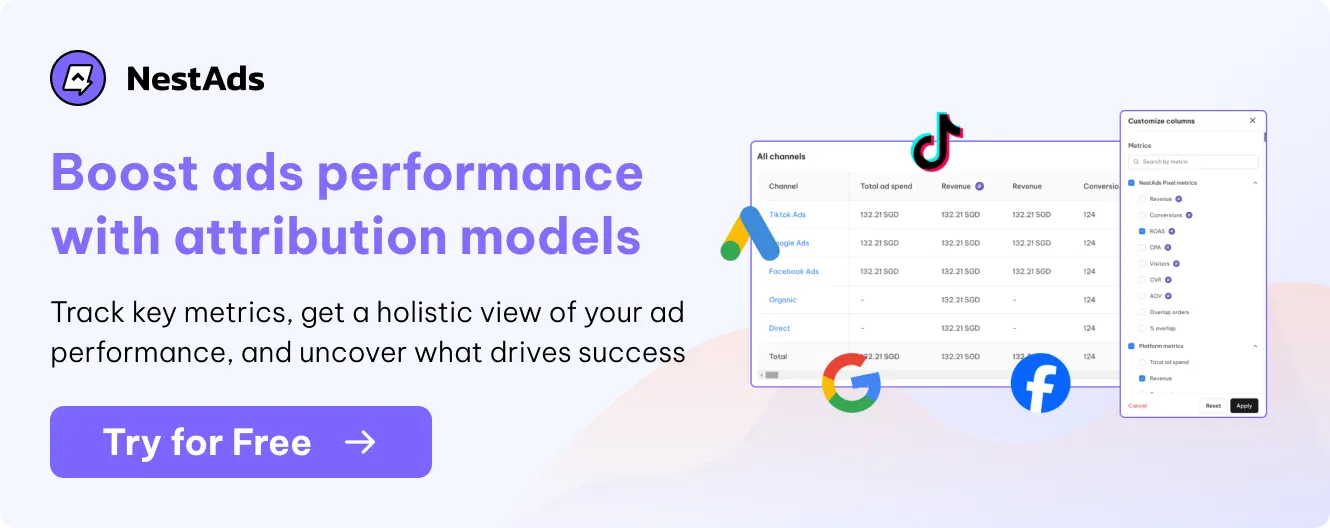
How can you apply both models to optimize marketing strategy?
In this section, we’ll discuss how you can combine both view-through vs click-through attribution to maximize their effectiveness to your business.
Track the entire customer journey
Now you need to look back into your customer journey. Customers rarely purchase after a single ad interaction. Instead, they often go through a multi-touch journey, starting with awareness (influenced by view-through) and progressing toward engagement or purchase (tracked by click-through). So, you need to capture this full journey to gain more valuable customer insights.
To track your customer journey more effectively, start by identifying the key touchpoints in your funnel. You can use view-through attribution to evaluate the effectiveness of your awareness-phase campaigns, such as display or video ads that build initial interest. Then, use click-through attribution to measure the performance of engagement and conversion-focused campaigns, like search ads or remarketing ads that encourage direct actions.
It’s also essential to segment your customers through behavior analysis. New visitors, for example, might respond better to view-through campaigns that introduce them to your brand. Meanwhile, returning visitors are more likely to convert through click-through campaigns that offer personalized messages or promotions.
With these insights, you can allocate your budgets more strategically. And also, create a more cohesive marketing strategy that aligns with the natural flow of your customer journey.
Implement Multi-touch Attribution (MTA)
Of course, relying on view-through vs click-through attribution provides an incomplete picture of how your ads influence customer behavior. While view-through attribution highlights how ads build awareness, and click-through attribution focuses on direct engagement, neither can fully capture the complexity of the modern customer journey.
So, you can try integrating both models into a multi-touch attribution framework, thus assigning value to every touchpoint. This helps uncover how various campaigns contribute to your bigger marketing picture.
One critical aspect of multi-touch attribution is assigning appropriate weights to each touchpoint. For example, if a display ad generates 1,000 impressions but leads to just 10 clicks on a search ad, it’s clear the display ad plays a significant role in sparking interest and guiding customers into the funnel. Instead of undervaluing these impressions, multi-touch attribution makes sure they receive credit for their role in the conversion path.
However, collecting data for multi-touch attribution seems to be a challenge. As it requires accurate and comprehensive data, it takes you great effort to gather sufficient data manually. So, we suggest using an attribution software like NestAds to assist you in this stage. You can let the software take over this process and focus more on the strategic tasks. This can enhance the accuracy of data, and the efficiency of your ad tracking as well.
NestAds follows every step of your customers across multiple channels, then centralizes and models all data to offer you detailed and aggregated customer journeys. Besides, what’s more critical is the longer attribution window of up to 90 days that helps you avoid missing out on important touchpoints that do have a strong impact on conversion. With these insights, you can make better decisions to optimize your ad campaigns.




































